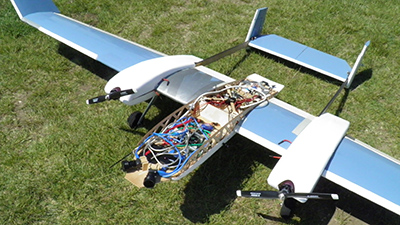Sense and Avoid Research
The sense and avoid (S&A) capability is crucial for the unmanned aerial vehicles (UAVs). It is due to the necessity of integrating civilian and governmental UAVs into the common airspace. In a S&A scenario, the ego-UAV is the observer, which estimates the probability and/or the possibility of collision. Based on this estimation, it initiates an avoidance maneuver, if and when it is required. The probability of collision can be determined through the estimation of direction and distance of the other aircraft or UAV (called in this context the intruder).

Monocular vision-based solutions can be cost and weight effective, therefore these are especially good for small UAVs. However, their application needs persistent excitation of the filter which estimates the intruder distance and flying direction. This is because of the inherent scale ambiguity of the monocular image. As a consequence, it requires the continuous maneuvering of the ego-aircraft, which is a time and energy consuming activity. For this reason, our current research targets the development of other methods to determine the possibility of collision considering solely image parameters without any special excitation of the system. Our latest results are based on novel and simple estimation techniques to obtain the time-to-collision and the relative closest-point-of-approach without ego-aircraft maneuvers. Successful real flight tests were carried out recently and further ones are planned in the near future.